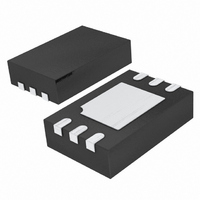LTC6991IS6#TRMPBF Linear Technology, LTC6991IS6#TRMPBF Datasheet - Page 16

LTC6991IS6#TRMPBF
Manufacturer Part Number
LTC6991IS6#TRMPBF
Description
IC TIMERBLOX OSCILLATOR TSOT23-6
Manufacturer
Linear Technology
Datasheet
1.LTC6991CDCBTRMPBF.pdf
(24 pages)
Specifications of LTC6991IS6#TRMPBF
Frequency
*
Voltage - Supply
*
Current - Supply
135µA
Operating Temperature
*
Package / Case
TSOT-23-6, TSOT-6
Count
*
Lead Free Status / RoHS Status
Lead free / RoHS Compliant
Other names
LTC6991IS6#TRMPBFTR
Available stocks
Company
Part Number
Manufacturer
Quantity
Price
LTC6991
applicaTions inForMaTion
Self-Resetting Circuits
The RST pin has hysteresis to accommodate slow-changing
input voltages. Furthermore, the trip points are proportional
to the supply voltage (see Note 6 and the RST Threshold
Voltage vs Supply Voltage curve in Typical Performance
Characteristics). This allows an RC time constant at the
RST input to generate a delay that is nearly independent
of the supply voltage.
A simple application of this technique allows the LTC6991
output to reset itself, producing a well-controlled pulse
once each cycle. Figures 13a and 13b show circuits that
produce approximately 1µs pulses once a minute. The
only difference is in the POL bit setting, which controls
whether the pulse is positive or negative.
Voltage Controlled Frequency
With one additional resistor, the LTC6991 output frequency
can be manipulated by an external voltage. As shown in
Figure 14, voltage V
R
output frequency as described in Equation (3).
Digital Frequency Control
The control voltage can be generated by a DAC (digital-
to-analog converter), resulting in a digitally-controlled
frequency. Many DACs allow for the use of an external
reference. If such a DAC is used to provide the V
voltage, the V
ing V
shown in Figure 15. The DAC’s output voltage now tracks
any V
The SET pin cannot be tied directly to the reference input
of the DAC because the current drawn by the DAC’s REF
input would affect the frequency.
I
When operating with I
1.25µA to 20µA range, the master oscillator operates
outside of the 62.5kHz to 1MHz range in which it is most
accurate.
SET
VCO
f
OUT
Extremes (Master Oscillator Frequency Extremes)
SET
to vary the I
SET
=
and using it as the DAC’s reference voltage, as
variation and eliminates it as an error source.
1024
1
SET
MHz
•
dependency can be eliminated by buffer-
SET
N
DIV
•
CTRL
50
current, which in turn modulates the
•
SET
k
R
Ω
sources/sinks a current through
VCO
outside of the recommended
•
1
+
R
R
VCO
SET
–
V
V
CTRL
S
E E T
CTRL
(3)
Figure 13b. Self-Resetting Circuit (DIVCODE = 11)
Figure 13a. Self-Resetting Circuit (DIVCODE = 4)
V
CTRL
Figure 14. Voltage-Controlled Oscillator
t
t
t
R
t
t
t
PULSE
PULSE
PULSE
R
2.26k
PULSE
PULSE
PULSE
R
2.26k
VCO
R
715k
PW
C
470pF
715k
R
PW
C
470pF
SET
PW
SET
PW
= –R
≈ –2.26k • 470pF • In(0.43)
≈ 0.9µs
= –R
≈ –2.26k • 470pF • In(1 – 0.61)
≈ 1µs
0.9µs PULSE WIDTH
R
1µs PULSE WIDTH
RST
GND
SET
SET
RST
GND
SET
PW
PW
60 SECONDS
60 SECONDS
LTC6991
• C
LTC6991
• C
RST
GND
SET
PW
PW
LTC6991
• In
OUT
• In
DIV
OUT
DIV
V
V
+
+
1–
V
OUT
DIV
RST(FALLING)
V
V
+
RST(RISING)
V
+
R1
392k
R2
1M
6991 F13b
V
6991 F13a
R1
1M
R2
392k
2.25V TO 5.5V
2.25V TO 5.5V
+
OUT
OUT
C1
0.1µF
0.1µF
0.1µF
V
+
R1
R2
6991 F14
6991f














